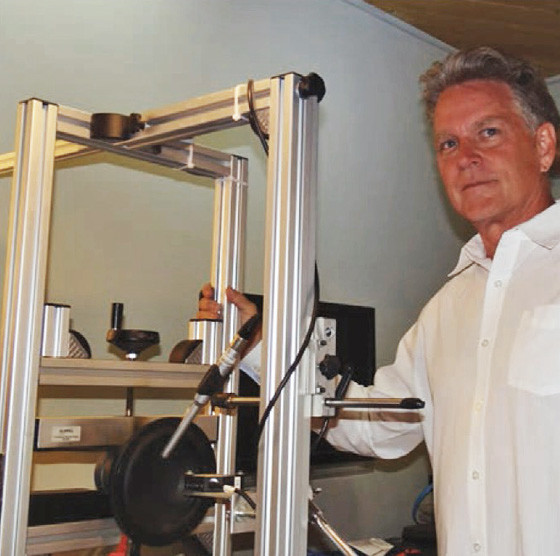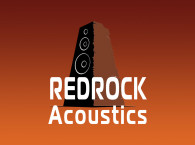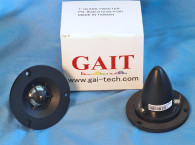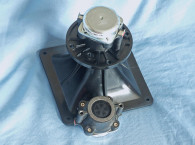Patrick Turnmire, of Redrock Acoustics, has been providing Voice Coil with valuable Klippel data for the Test Bench column, beginning with the October 2003 issue. Patrick and I have worked together on a number of consulting projects during that time period. I selected the interview format because I thought readers would like to hear more about Patrick Turnmire’s work and his company, Redrock Acoustics (www.redrockacoustics.com).

Vance Dickason: Redrock Acoustics is known for its SpeaD and Reverse SpeaD transducer development software and for its use of the Klippel distortion analyzer to test speakers for Voice Coil’s reviews. Is this the core of what you do?
Patrick Turnmire: Actually, the core business for Redrock Acoustics is general loudspeaker consulting that includes transducer design, system design, custom software tools, and testing/evaluation.
Vance: Transducer design covers a lot of territory. Exactly what types of products do you design and what services do you provide?
Patrick: We have designed something like 1,700 speakers that made it to the retail market during the last 24 years. This includes everything from providing simple mechanical dimensions created using SpeaD, to complete designs that included non-linear mechanical finite element analysis (FEA) for cone and edges, time harmonic magnetic FEA to optimize shorting rings, and industrial design.
Vance: Wow, 1,700 speakers in 24 years? That is something like 70 speakers per year. That seems a huge number.
Patrick: That must be some kind of a record right? A large majority of those products were designed while working for major Chinese loudspeaker factories. I was with Sonavox for seven
years, and it was common to design and produce hundreds of new products each year for many different brand names. The SpeaD transducer software was developed during this time out of the necessity to design speakers quickly and accurately.
Vance: SpeaD was the first commercial software that predicted transducer parameters from mechanical part descriptions. How did that come about?
Patrick: Like most speaker designers, I had a series of Excel tools that designed coils and motor structures and suspension parts. The massive workload at Sonavox led me to create a linked set of tools that would create complete parameter sets from the sum of these tools. Reverse SpeaD came about in a similar way. Many customers would want a specific performance in a target box type and volume. Reverse SpeaD took those targets and synthesized the required parameters to meet the targets. Together they allowed really fast system and transducer design. This streamlined the development process from three or four samples built over weeks and months to a single or worst-case two iterations in a few weeks. This also dramatically reduced the engineering costs.
 Vance: So is there anything new in SpeaD?
Vance: So is there anything new in SpeaD?Patrick: I got sidetracked on other engineering projects for the last couple of years and did not complete development of a totally new set of tools. This is back on the front burner and the first beta version of SpeaD FEA will be out shortly (ed. note - SpeaD is now in version 3.0 and Spead FEA is soon to be released). It couples magnetic FEA (AC, DC, and time harmonic) to the SpeaD engine. This allows more accurate modeling as well as more complete analysis that includes the effect of induction control methods.
Many other new features are included. Perhaps the most exciting is AutoSpeaD. This is a tool that will automatically design the most cost-effective options to achieve target performance parameters. Essentially, it merges SpeaD and Reverse SpeaD and intelligently designs speaker options for you.
Vance: You also talk about custom software tools. Can you provide some examples?
Patrick: I am a modeling geek. This means I have a huge library of tools that model acoustics and magnetics. I have created custom modeling tools planar magnetic devices, transformers, induction motors, and a variety of non-audio devices. The library I use for my own engineering work includes microspeaker simulations, nonlinear large-signal analysis including enclosures, dipoles, and tools to quickly predict performance with a minimum of input parameters. I have some of these tools posted on my website for free and will add more in the next few months.
Vance: You do all of the Klippel testing for Voice Coil. Can you talk about how that started and Klippel testing in general?
Patrick: Klippel generously provided a distortion analyzer for Voice Coil’s use more than 10 years ago. Over that time, I have tested more than 2,000 speakers for Voice Coil, Car Audio and Electronics, and other customers. This might make Redrock Acoustics the most experienced independent testing facility in the world.
Over time, I have optimized the standard tests I perform to help identify large-signal performance problems and their cures. This is a big part of what Redrock Acoustics does on a daily basis. We can help identify nonlinearities and their effects on performance and recommend a “cure.” Many well-known brands take advantage of this service.
A good example of the success of this process is the current line of Dayton Audio-branded speakers from Parts Express. Its entire line has been optimized using Klippel testing and our analysis. Its products compare favorably against all the top “high-end” speakers — at very competitive pricing.
Vance: Redrock Acoustics is also associated with many loudspeaker patents. Can you tell us about the patents?
Patrick: Actually, I am a partner in a separate IP company called Step Technologies (www.stepip.com). My partners and I have about a dozen patents and applications covering motor topology, materials, arrays, and enclosure enhancements. We are probably best known for the Dual Gap and Low Reluctance Return Path motors. These essentially allow very high excursion from short coils.
High excursion and high sensitivity! We are currently licensing these technologies to a few well known customers.
Vance: Can you provide a few examples of Redrock Acoustics’s design work?
Patrick: In one car audio season we designed 80 new products (five months total from concept to production). This included complete ground-up design, providing complete CAD drawings that could go directly to tooling. The lineup included subwoofers, tweeters, crossovers and housings, midbass and midranges. The higher end products required nonlinear mechanical FEA for cone, edge and spider designs, magnetic FEA for very unique motor structures, thermal FEA to optimize cast basket heat flow, structural FEA for basket stress analysis, and finally packaging drop analysis to make sure the boxes were appropriate for some very heavy woofers.
One of this season’s products was the Cerwin-Vega Stroker Pro woofer (www.cerwinvega.com). The woofer has 32 mm of linear XMAX and 55 mm of functional excursion (in each direction). This speaker features adjustable suspension bias, dual gap motors with multiple magnet air gap (MMAG) technology, OsD-edge design to optimize cone area, and reconable moving parts. For many years, this was the highest performance subwoofer in car audio. Some audio enthusiasts still claim it was the best sounding.
Vance: So what’s next for Redrock Acoustics?
Patrick: We are always looking for new clients and opportunities. The focus now is on the new version of SpeaD FEA, and a “hush-hush” software project that will revolutionize home-theater design.







